This article has links to products and services we love, which we may make commission from.
Backpacking in Nicaragua is a great choice for those new to this style of travel and has lots to offer the more established drifter. This guide details everything you need to know to plan your next trip to The Land of Lakes and Volcanoes.
Backpacking in Nicaragua Itinerary
Nicaragua is sandwiched between Honduras on top and Costa Rica on the bottom.
Managua (Man-ahg-oo-ah) is Nicaragua’s capital and largest city.
This city gets less attention from backpackers; many ‘get in and get out’ to move on to other areas.
Slightly north of Managua (2.5 hours by bus), you will find the liberal university town, León, which is the gateway to the infamous tourist attraction – volcano boarding, where you bomb down the volcano, Cerro Negro.
Hiking up an active volcano and sledding down it is one of the things Nicaragua is best known for!
If you want to learn more about Nicaragua’s history, a revolution tour is worth checking out in León.
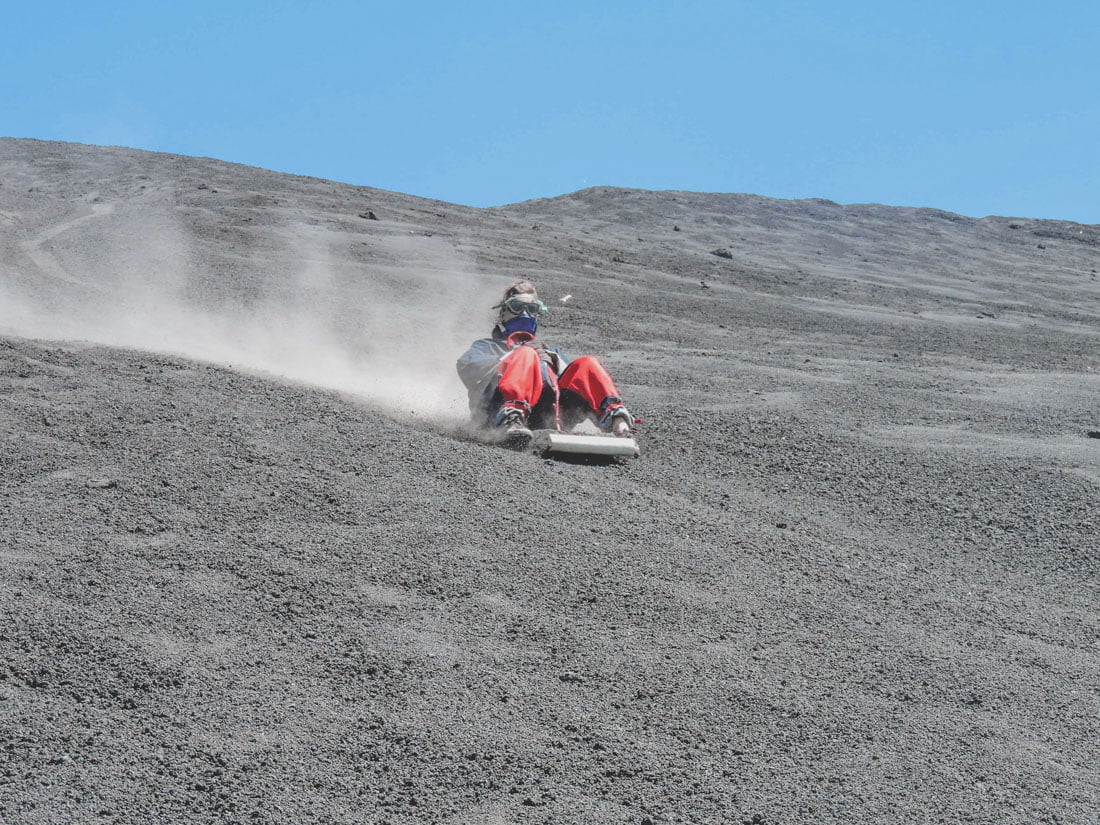
Are you brave enough to volcano board?
Thirty minutes by chicken bus from León is paradise, which takes the shape of a beach town called Las Peñitas (Pen-yiet-ahs)!
North of León is the coffee and tobacco region.
Popular stops include Matagalpa and Estelí (Es-tel-lee), which can be reached by microbus (approximately 2.5 hours from Managua).
A Somoto Canyon day trip can be made from both towns.
Somoto is quiet; we opted for a slightly more bustling Estelí after reading Nicaragua travel tips online.
Why not visit the Hermit in the Cave if passing by Estelí?
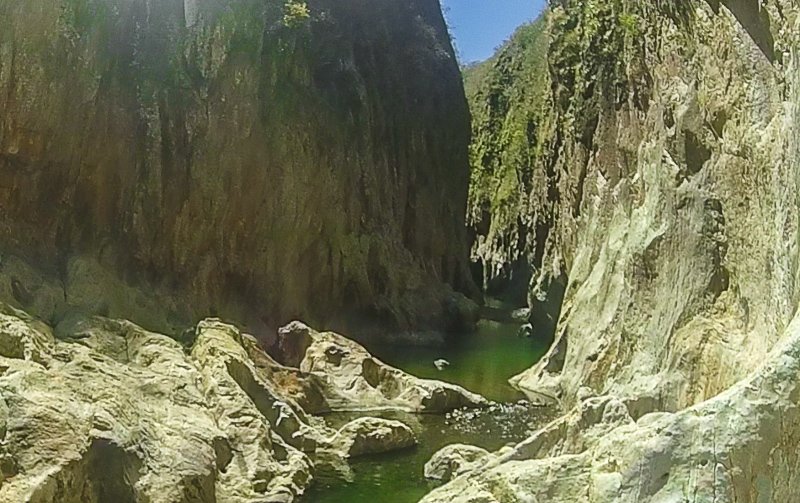
Somoto Canyon – hike, jump, swim.
On the east side of Nicaragua lies the Caribbean with its turquoise water and sandy beaches.
The most notable stops include the Corn Islands and Pearl Lagoon.
The country’s east can be easily reached via La Costeña.
There is also the option of an overland trip via bus and boat.
This journey takes up to three days and can be tricky.
Listen to the advice of the navy, and do not get on a boat if you feel the weather is unpredictable.
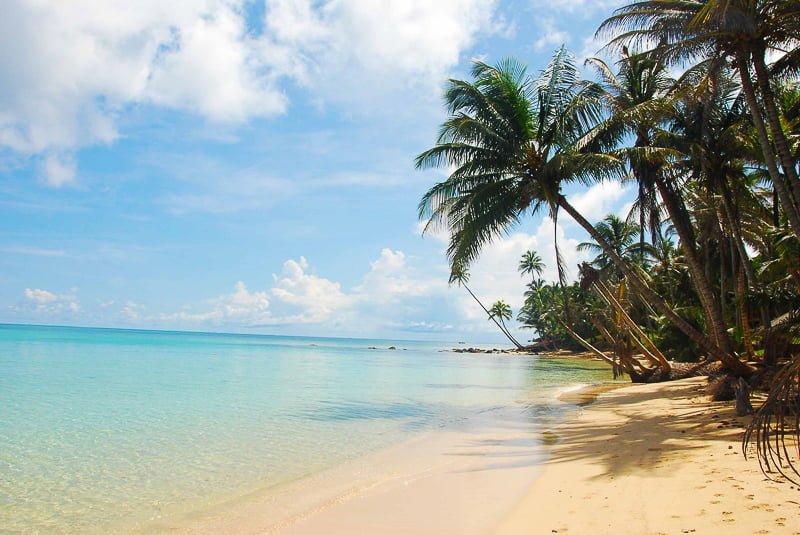
Corn Islands | Little Corn by Don’t Forget to Move
The road less traveled is situated in the south/southeast of Nicaragua – San Juan Del Norte (limited boats from San Carlos).
During our five weeks traveling around Nicaragua, we only met one couple considering visiting this area.
Let me know if you make it!
South of Managua is the main gringo trail.
It starts in the modern, European-feeling city of Granada.
Granada has many foreigner-friendly restaurants, although Craig did get food poisoning from a local breakfast spot, and many gyms for those seeing the backpacking belly take over!
Laguna de Apoyo is a popular day trip from Granada.
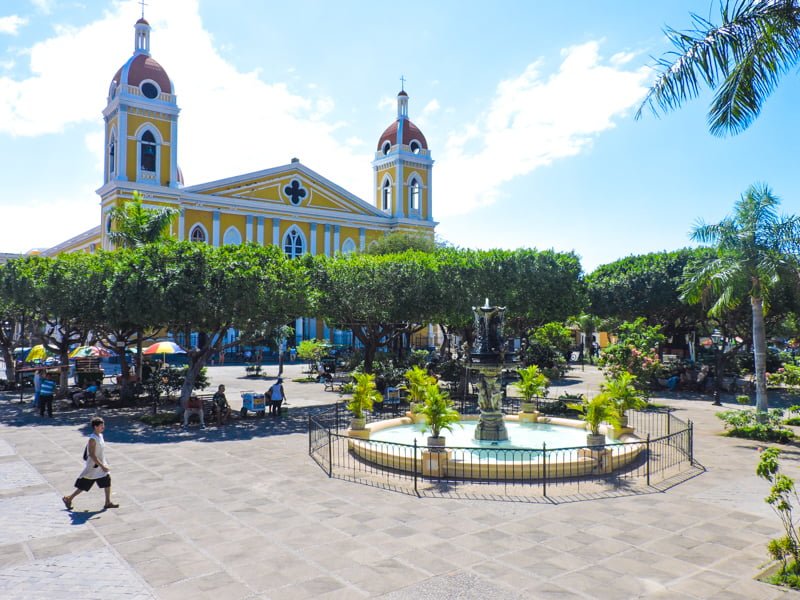
Granada Cathedral – Sightseeing while backpacking in Nicaragua
South of Granada is Ometepe (Ohm-eh-t-heh-peh), the figure of eight-shaped island, which houses two dormant volcanoes, Conception and Maderas.
Ometepe is a hotbed for nature, natural swimming pools, waterfalls, and fincas, and is reached by ferry from the port of San Jorge (Hohr-hey) via the town of Rivas (Ree-vans).
Back on the mainland and heading South to Costa Rica is the party town San Juan Del Sur (Sahn – Wahn- Del – Soor), a surfer’s haven but close to North American prices.
This is where you will find the most popular Nicaragua beaches, but be warned, accommodation is often a bus ride away, and you often have to pay to enter the beach.
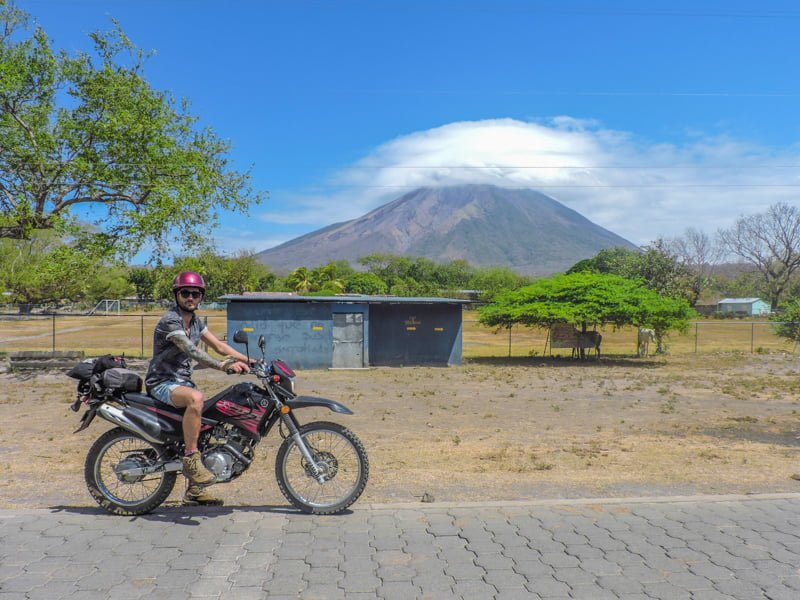
Cool rider – bike hire is recommended on Ometepe
Nicaragua: Length of Stay?
How long should I stay in Nicaragua?
That is a good question, not one I can easily answer.
We met many backpackers on a two-month Central America trip who were spending three weeks in Nicaragua (most of whom loved Guatemala, by the way, so something to consider when planning a trip to Central America – check out Will at The Broke Backpacker’s backpacking in Guatemala guide) as well as honeymooners who were on a one-week vacation.
Check out our route to help you decide how long to spend in Nicaragua.
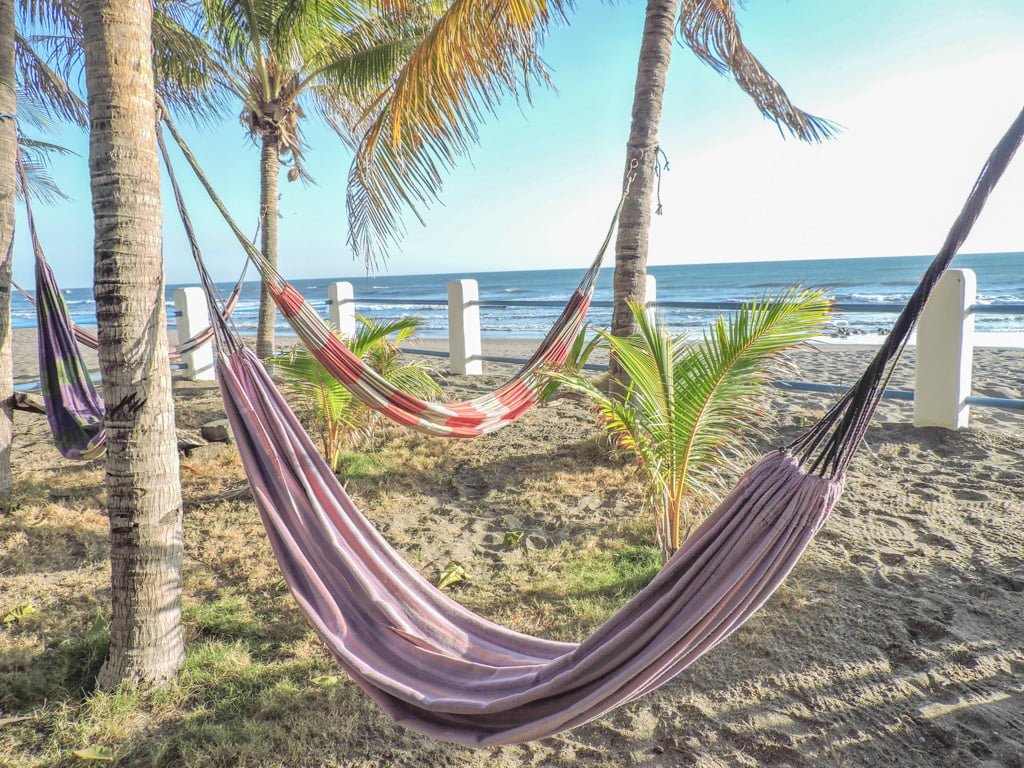
Our Backpacking Nicaragua Route
- Managua: 1 night
- Las Peñitas: 5 weeks with weekends in Leòn
- Managua: 1 night
- Estelí: 2 nights with a day trip to Somoto Canyon
- Ometepe: 4 nights (2 nights in Moyogalpa and 2 nights in Merida)
- Granada: 7 nights
As you can see, we never made it to the Corn Islands, which is a sin!
However, by this point (month 11 of our 17-month long-term travel trip), we were constantly fighting with travel burnout, so we chose a slower-paced, the best way to tackle backpacking Nicaragua.
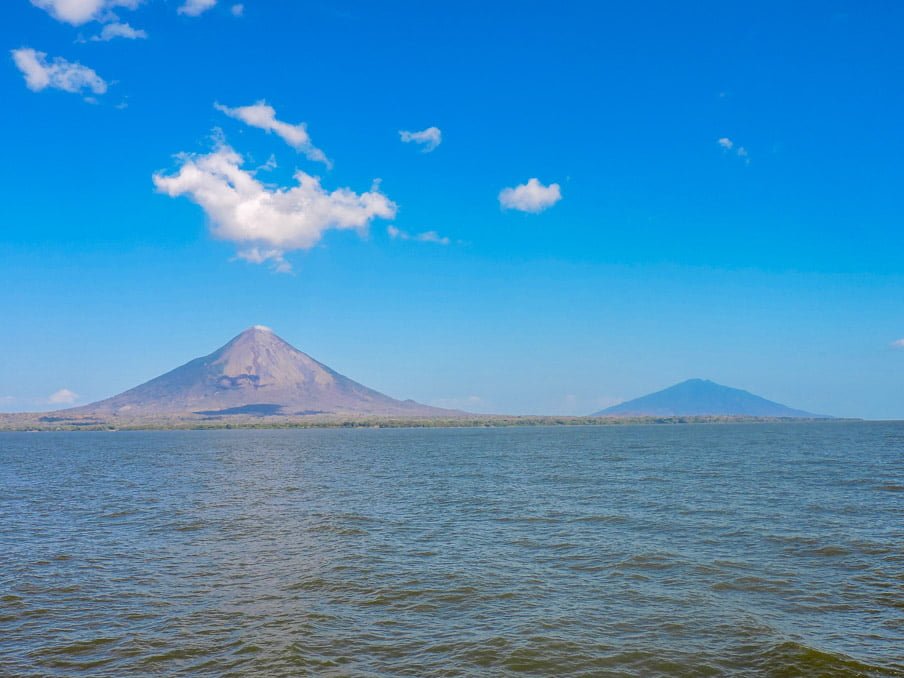
Nicaraguan Food
Like our Texan friends, Nicaraguans love the grill!
Typical Nicaraguan food consists of rice, beans (often called Gallo Pinto), and either pescada (fish), cerdo (pork), or pollo (chicken).
You do get reis (steak), but less so.
Street food is a great budget saver; look out for grills lined up along streets; some will have a few tables.
Another popular meal in Nicaragua is tacos!
Deep fat fried tortilla, rolled up and stuffed with meat, then served with cabbage and cream.
Food in León is cheaper than in Granada.
Nicaraguan ‘corner shops’ are called pulpería (Poolp-oor-ee-ah).
These vary in quality, but you can expect some snacks, shampoo, and suntan lotion.
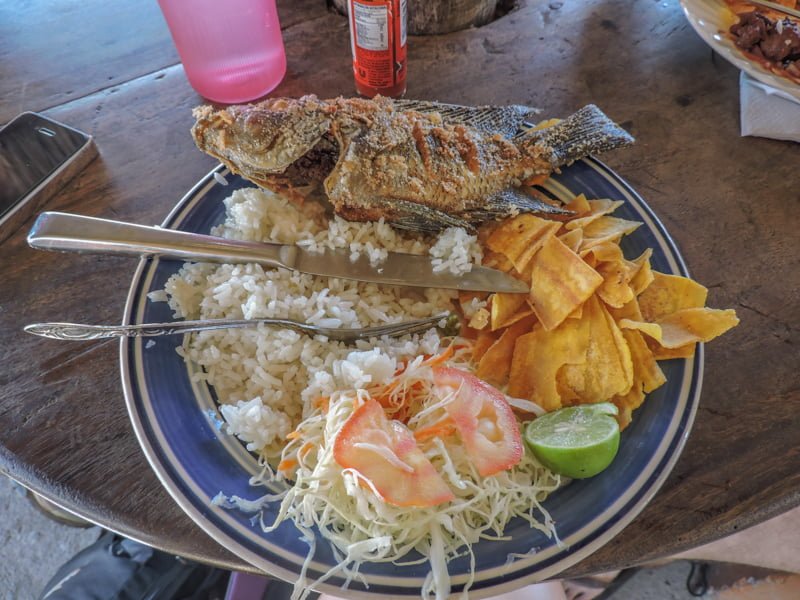
Fresh, fast food – rice, tortillas, and cabbage are typical Nicaraguan plate filler.
Nicaragua Money
Cordobas (NIO) is the main currency in Nicaragua.
Check here for the current rate.
Most cities have ATMs, but smaller towns might not. Contrary to belief, Ometepe does have banks.
We found BAC (red and white) ATMs to be the best regarding no charges for our debit cards.
American dollars circulate in Nicaragua, but change is often given in Cordobas, and the exchange rate is at the hands of the hotel/restaurant owner!
You will see many tours advertised in dollars, you should be able to pay in both.
Men with wads of cash stand on the street corners of most cities and greet you from the bus at the border between Nicaragua and Costa Rica.
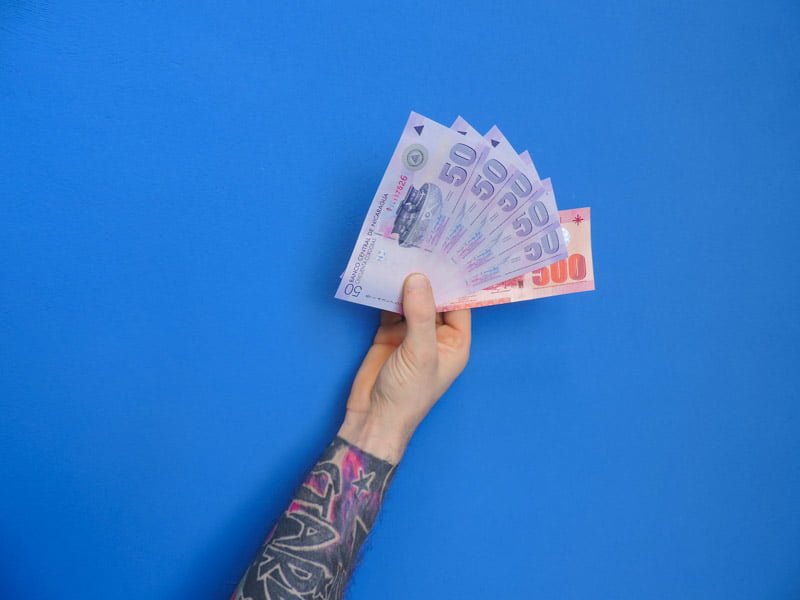
Backpacking in Nicaragua on a budget – fácil
Transport in Nicaragua
Nicaragua is impressively connected via taxis and buses.
For shorter journeys, opt for the local chicken buses.
These big American school buses are often painted in bright tones and equipped with banging sound systems.
A ten-minute journey can take double or triple the amount of time as a taxi ride because of the number of stops the bus takes.
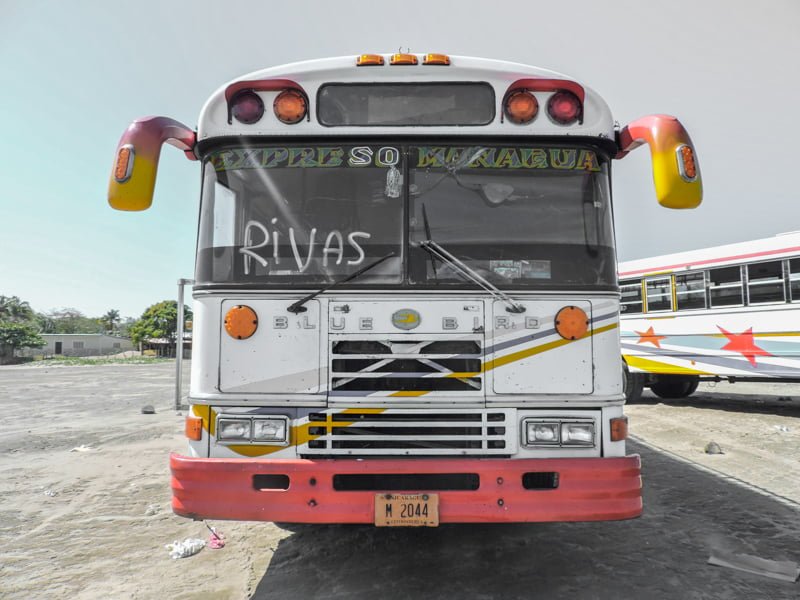
Chicken buses – cheap, loud, and proud
Use the microbus for longer journeys; this is a small minibus that seats fifteen people plus the driver.
If taking a taxi in the city, ask for the overall price for every person in the car.
Para dos? For two? Para tres? For three? This simple broken Spanish may help you, too.
Write down the agreed amount and show it to the driver; we had several experiences where drivers changed the cost at the end of the journey.
There are tuk-tuks, but not as many as in Southeast Asia.
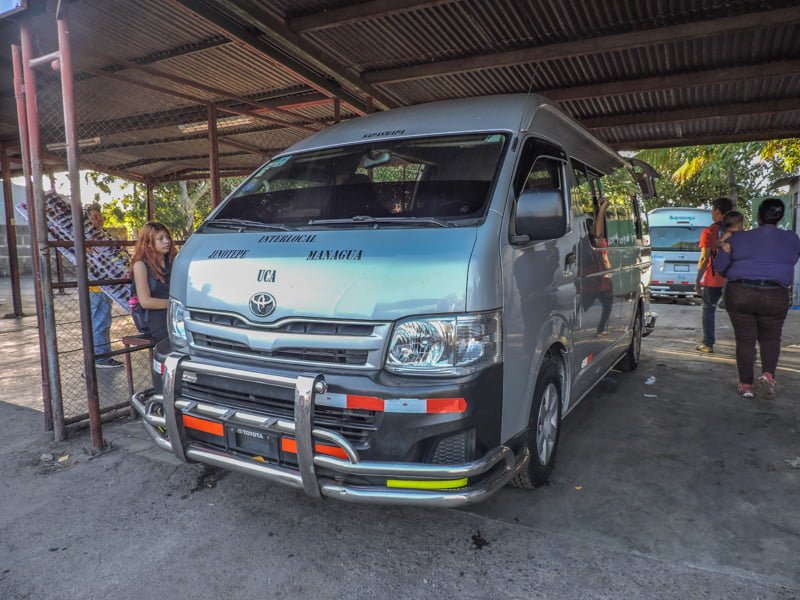
Microbuses in Nicaragua
Accommodation in Nicaragua
There’s a wide variety of types of accommodation in Nicaragua, and most will vary in standard, too.
For the budget legs of your trip, there are hostels with dorms and private rooms, and for a bit of luxury, you’ll find hotels with air conditioning in most cities.
We volunteered for five weeks through Workaway, working and living at a small beach hotel to stretch our budget in Nicaragua.
Nicaraguan Culture
Nicaraguans are friendly.
Ask a local for directions, and you’ll get a street full of people helping you.
However, catcalling is a part of everyday life in Nicaragua.
Machismo is rife; many Nicaraguan men stare just as long and hard at their native counterparts as they do at foreign females.
Fiesta!
Many Nicaraguans like to drink.
The local beers are Toña and Viktoria (slightly cheaper).
Rum is also popular!
We never went ‘clubbing’ in Nicaragua as in Colombia, but we sure did enjoy a couple of daiquiris by the beach and beers in the city.
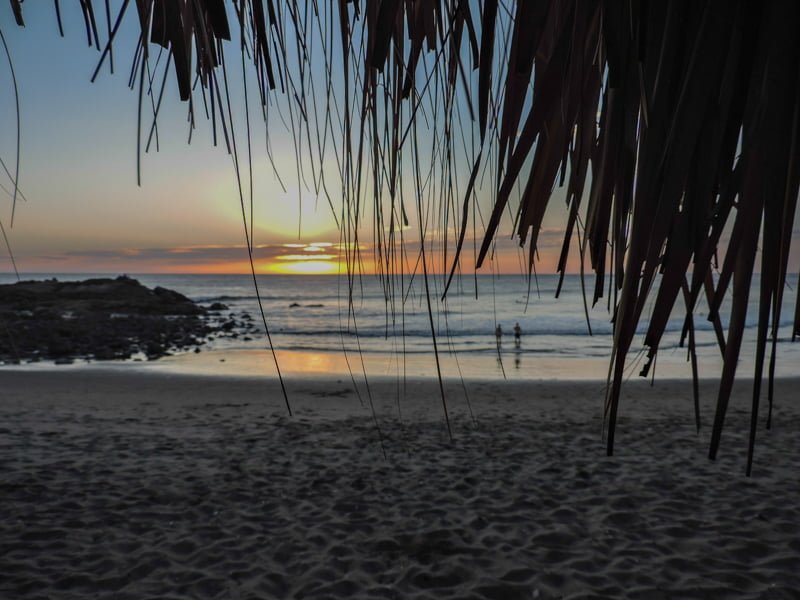
Las Peñitas, a piece of paradise on your Nicaragua travel guide
Nicaragua Weather
The best time to visit Nicaragua is the dry season months of December to February.
After February, it becomes hot and stuffy.
We visited in January to March, the heat was bearable with dips in the sea or canyon, however, the city of Leòn was hard work!
The north is always cooler.
Naturally, the plants will begin to dry out during this season, but that did not impact the beauty of Ometepe.
The best advice we were given for Ometepe was to stay on the Moyogalpa side of the island for one night and ask around about the weather forecast before planning bike rides, hikes, or kayaking.
September to December is the wet season in Nicaragua, so the country is so lush… It rains hard.
Mosquitos are rife all over the country; cover-up!
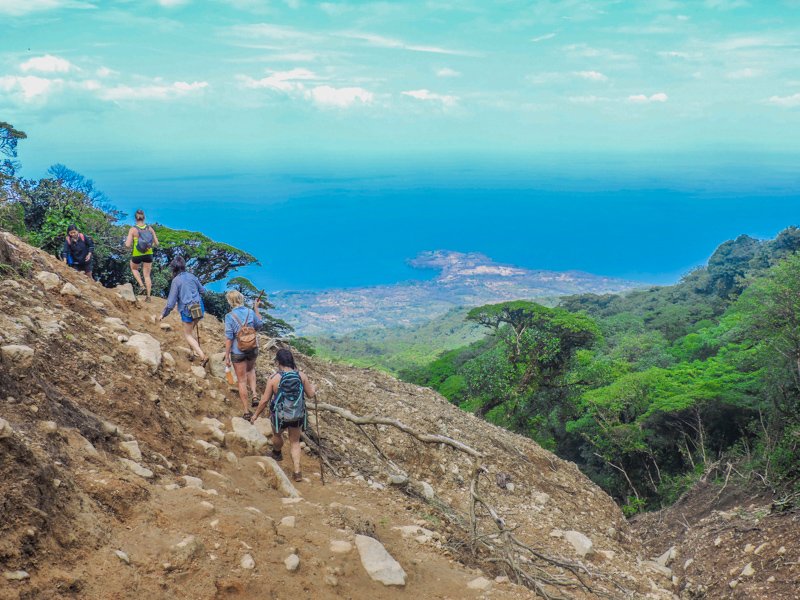
Hiking the volcano, Maderas, on Ometepe
Final Words
Nicaragua is a fun and affordable country to backpack around compared to many Western countries.
There is lots of variety between islands, cities, beaches, and canyons, and the Nicaraguan people are friendly.
They love to chat about their country and often have a wee moan!
The efficient and affordable transport links make transit easy to manage and budget for backpackers.
The only tricky part is how long to spend in Nicaragua, the Land of Lakes and Volcanoes!

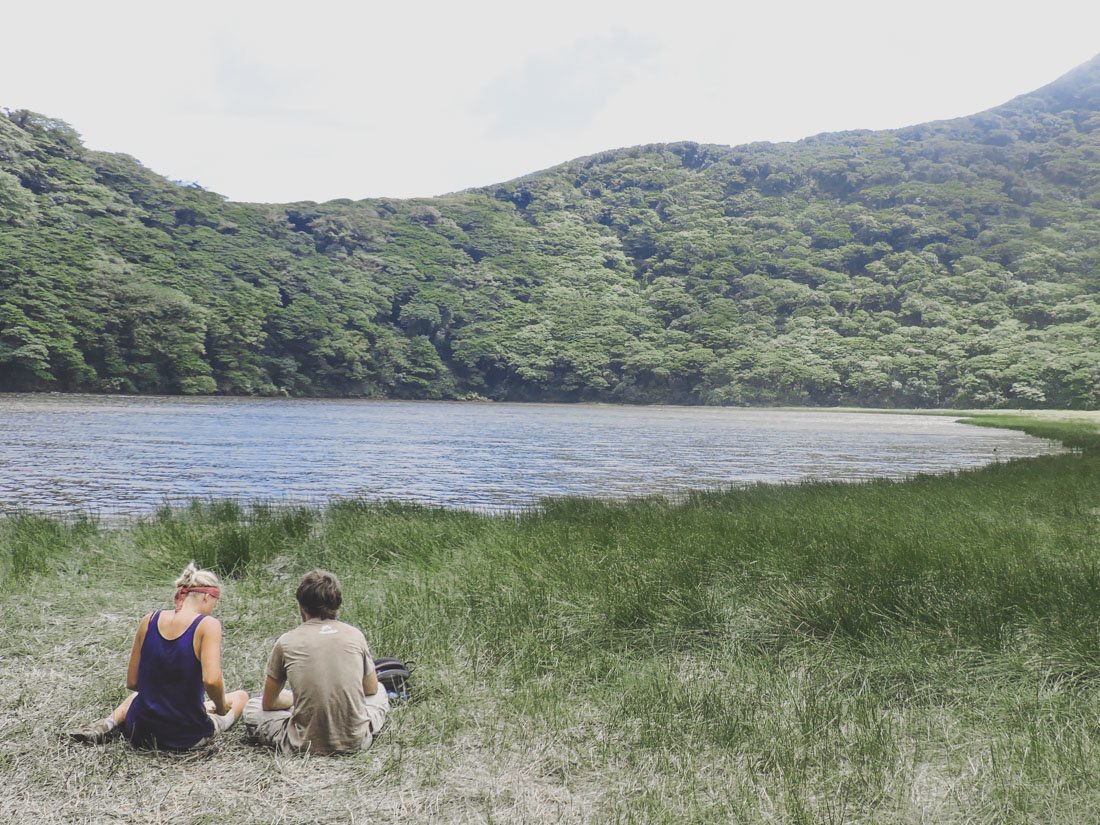
Hi! Nice post,thanks for sharing…what do you think of backpacking Nicaragua today with two teens?
Hey Carlos. I always recommend going with your own government’s advice when it comes to safety. The UK has now said that they’ve removed the banner ‘don’t travel here’. The companies that we met when we were there are showing lots of normal activity on their Facebook pages. Hope that helps somewhat! It’s an awesome country. Be sure to check out the volcano boarding with your teens! You can read about our experience here.